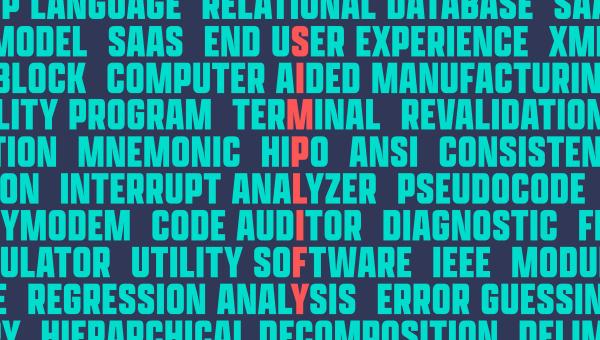Unlocking Success: Understanding Digital Credentials and Their Importance in Today’s World
In an era defined by rapid technological advancement and global connectivity, digital credentials have emerged as a cornerstone of modern education and workforce validation. Whether you’re a student, job seeker, educator, or employer, understanding digital badges, e-certificates, and their role in digital credentialing is essential for thriving in today’s competitive landscape. This article explores what digital credentials are, why they matter, and how they can unlock new pathways to personal and professional success.
What Are Digital Credentials?
Digital credentials are electronic documents or symbols that verify an individual’s learning, skills, or achievements. Unlike traditional paper certificates, digital credentials are shareable, secure, and often include verifiable metadata illustrating the holder’s accomplishments.
- Digital badges: Visual icons representing completed skills, competencies, or experiences.
- Digital certificates: Secure, verifiable versions of diplomas or completion certificates viewable and shareable online.
- Micro-credentials: Short, focused certifications validating specific expertise or skill sets.
Digital credentials are stored and managed through secure platforms, including blockchain-based systems that guarantee authenticity and prevent tampering.
Why Are Digital Credentials Crucial?
The traditional approach to recognizing qualifications is evolving. Here are key reasons why digital credentialing is transforming education and the workforce:
- Instant Verification: Employers and institutions can quickly verify digital badges and certificates, eliminating the risk of forged documents.
- Portability: Digital credentials are stored online, accessible anytime, and can be shared across platforms like LinkedIn, portfolios, and job applications.
- Rich Facts: Metadata provides context—when and how an achievement was earned, by whom it was issued, and the criteria involved.
- Learner Empowerment: Individuals gain control over their lifelong learning journey, curating, and promoting their skills on demand.
- Global Recognition: Digital credentials transcend borders, enabling cross-cultural employment and collaboration opportunities.
The Benefits of Digital Credentials
Implementing digital credentialing systems offers advantages for learners, educators, and employers:
Learners & Job Seekers
- Enhanced Employability: Showcase validated skills and competencies directly to recruiters and employers.
- Career Progression: Collect micro-credentials to upskill and adapt to changing industry demands.
- Increased Visibility: share achievements on professional networks and digital resumes, substantially increasing discoverability.
Educators & Training Providers
- Motivation & Engagement: Issue digital badges to recognize milestones and drive higher engagement among learners.
- detailed Analytics: Track progress and skill acquisition for continuous curriculum betterment.
Employers & Organizations
- Efficient Recruitment: Instantly verify candidate qualifications, reducing hiring risks and administrative overhead.
- Strategic Talent Progress: Foster a culture of continuous learning by rewarding employees wiht digital micro-credentials for upskilling.
How Digital Credentials Drive Real-World Success: Case studies
Leading organizations and educational institutions are already harnessing the power of digital credentials. Here are some real-world examples:
-
IBM’s Digital Badge Program:
IBM has issued millions of digital badges to recognize technical skills and cloud certifications. These badges are now standard across resumes and linkedin, resulting in a 35% increase in employee mobility and career growth.
-
Coursera and edX:
Massive open online courses (MOOCs) issue verifiable certificates and micro-credentials, allowing global students to boost their resumes and land new job opportunities.
-
Mozilla Open Badges:
Mozilla developed a free, open-source system for issuing and verifying digital badges, making it easier for learners to collect and share their skills.
Practical Tips for leveraging Digital Credentials
Whether you’re an individual or an organization, here’s how you can maximize the impact of digital credentialing:
- For Learners:
- Choose credential providers recognized by your target industry.
- Regularly update your portfolio and LinkedIn with earned digital badges and certificates.
- Use metadata to demonstrate the specific criteria and skills associated with your achievements.
- For Educators & Institutions:
- Select secure, standards-based digital credential platforms like Open Badges or Credly.
- align badge criteria with in-demand 21st-century skills (interaction, coding, project management, etc.).
- Offer micro-credentials for “soft skills” and technical achievements alike.
- For Employers:
- Encourage and sponsor employee upskilling with recognized digital credential programs.
- Integrate digital credential verification into your recruitment and onboarding workflows.
First-Hand Experience: A Digital Credentials Success Story
“After completing a project management micro-credential through a recognized online platform, I added the digital badge to my LinkedIn profile.Within weeks, recruiters reached out directly to discuss open positions. the digital credential made it easy for them to verify my skills, and it gave me confidence to pursue new opportunities.” - Priya S., Project Manager
Frequently Asked Questions About Digital Credentials
-
Are digital credentials secure?
Yes. Most platforms use blockchain or encrypted databases to ensure tamper-proof authenticity.
-
How do I share my digital badge or certificate?
Digital badges include a sharable link, and many integrate with LinkedIn or allow embedding on personal websites, resumes, and email signatures.
-
Can digital credentials replace traditional degrees?
They complement, rather than replace, degrees—offering verifiable proof for targeted skills and continuous learning alongside formal education.
Conclusion: Embrace Digital Credentials to Unlock Your Future
Digital credentials are rapidly redefining how we prove what we know and can do. In a digital-first world, they offer convenience, security, and instant recognition across borders and industries.By embracing digital badges,certificates,and micro-credentials,learners can boost employability; educators can motivate engagement; and employers can build more agile,skilled teams.
As the job market and educational landscapes continue to shift, staying ahead means actively managing your digital identity and leveraging trustworthy digital credentials. Unlock success for yourself or your organization—start building, issuing, and sharing digital credentials today!

